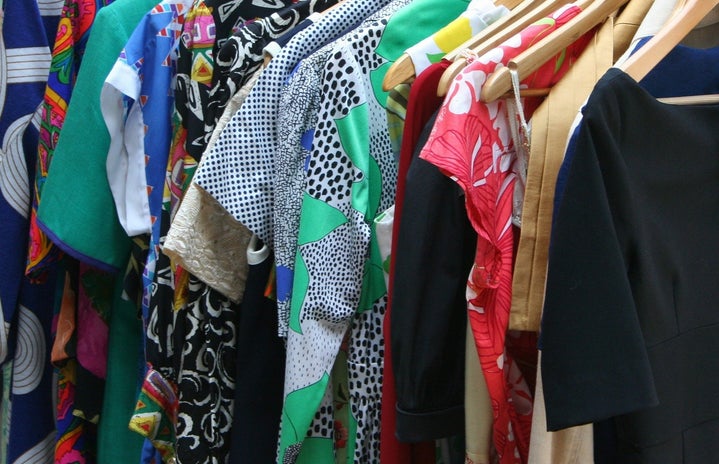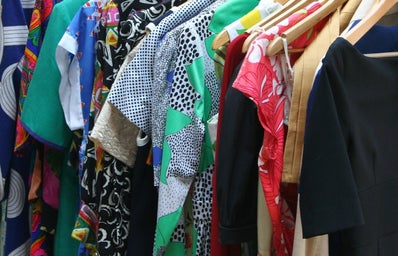The dresser drawer is too stuffed to close, full of unworn shirts and jeans that were in style a few months ago. Most of us know the feeling. So you grab a trash bag from under the kitchen sink and stuff it with unwanted garments. The bag lives in the trunk of your car for a few weeks until you drop it into a big metal donation bin in a parking lot.
These bins make us feel good about ourselves for organizing our closets and helping those in need. But they’re an easy out for our overconsumption. The average American dumps 70 pounds of clothing each year, according to the Council for Textile Recycling. When our trash bags fall into the abyss of a donation bin, a large chunk is shipped abroad. These clothes destroy local economies in the receiving countries and perpetuate global unemployment.
If unsellable donations aren’t sent to a landfill or diverted by a company like Goodwill to be recycled, they’re exported to be sold overseas. The United States is the largest exporter of used clothing, according to data from the United Nations Comtrade Database. We export 700,000 tons of secondhand clothes abroad each year.
Our donated clothing harms local textile industries abroad, said Andrew Brooks, author of “Clothing Poverty: The Hidden World of Fast Fashion and Second-Hand Clothes,” in a BBC story. One-third of clothing donations from across the world end up in Sub-Saharan Africa. Second-hand garments are a significant market share across the region from Senegal to Swaziland, Brooks said. In Uganda, 81% of purchased clothing are imported second-hand garments, his research found.
Because of this phenomenon, the number of people employed in textile and clothing industries fell in Ghana by 80% between 1975 and 2000. In Nigeria, the textile workforce diminished from 200,000 people to almost none, according to Brooks.
How does this happen? We buy too many clothes.
Every year, an average American purchases 68 clothing items, the CEO Jennifer Hyman of clothing rental service Rent the Runway told the New Yorker. And 80% of those clothes are rarely worn.
Remake is a global advocacy organization fighting for fair pay and climate justice within the clothing industry. One of their annual initiatives is a #NoNewClothes campaign, through which they encourage participants to “reset their relationship with fashion and their consumption habits by pausing purchases on new clothes for 90 days.”
This practice helps consumers become more intentional. They’ll stop buying things just because it’s a good deal. They’ll realize that life will go on without that shirt in the store window. They’ll purchase more versatile and long-lasting garments.
Plus, you’ll take fewer trips to the donation bins if you wear all of the clothes that you buy.
Even if shoppers minimize their clothing purchases, natural wear causes holes and thinning material. Basic sewing skills and repurposing keep a garment nearing the end of its life from interfering with textile industries abroad. A small hole can be mended. A t-shirt can become a set of cleaning rags.
When consumers do have clothes to donate, they should research the charitable organizations behind the bins. Some are more committed than others to keeping donations in the community. Donated clothes should also be clean and wearable. “Charities don’t exist to pay for our trash,” Remake said.
Dumping our excess clothing into donation bins isn’t necessarily a good deed or a solution to our out-of-control closets. We need to think about the eventual consequences of our purchases in the moment, and consider that we’ll survive rewearing the dress we already have.



